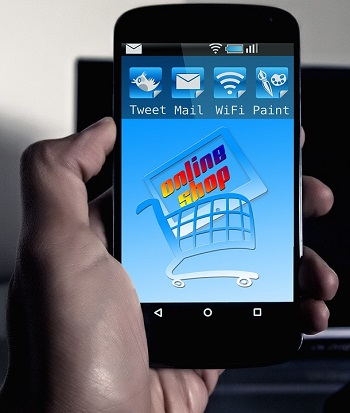A Trustlook survey showed that consumers will ignore certain risks in exchange for easy shopping.
Mobile commerce security is an important issue this holiday season. Seventy one percent of smartphone owners plan to use their mobile devices to help them along some point of the shopping journey.
Trustlook has recently released a survey with results from which it has made its holiday predictions.
The Trustlook survey focused on smartphone users with Android phones. The goal was to accurately forecast consumer behaviors throughout the holiday shopping season this year. What they found was that 40 percent of the survey participants actually prefer shopping over smartphones. This despite the mobile commerce security concerns that have been holding back the channel’s adoption.
 Another 18 percent of the survey participants said that their preference was to shop in-store during the holidays. The results revealed that 43 percent of smartphone users will be making over $250 in purchases over their devices. The top m-commerce apps were identified as Amazon, eBay and Walmart.
Another 18 percent of the survey participants said that their preference was to shop in-store during the holidays. The results revealed that 43 percent of smartphone users will be making over $250 in purchases over their devices. The top m-commerce apps were identified as Amazon, eBay and Walmart.
That said, shoppers haven’t taken adequate mobile commerce security steps to protect themselves.
Even though 70.35 percent of participants in the survey said they planned to make a purchase over a smartphone or tablet, they were not protecting their personal and financial data. In fact, a wide majority of people hadn’t even installed security software. Sixty four percent of survey respondents did not have a mobile security app installed on their device.
Trustlook CEO, Zllan Zhang, said “Mobile shoppers need to be more cautious than ever,” adding that “This risk isn’t going away as mobile shopping activity ramps up.”
This is an interesting finding as concerns over mobile security have been among the top cited reasons that people have held off shopping over smartphones. It appears that there is a growing group of people who are moving ahead with smartphone based shopping regardless of that potential issue.
The hope from security firms is that if consumers are willing to ignore the mobile commerce security risk, they will at least take more steps to protect themselves. There are several small steps such as security apps that can help to keep sensitive data safer.

 Despite that fact, this makes it very clear that mobile payment adoption remains an exceptionally slow process. It is far from being mainstream as of yet.
Despite that fact, this makes it very clear that mobile payment adoption remains an exceptionally slow process. It is far from being mainstream as of yet.